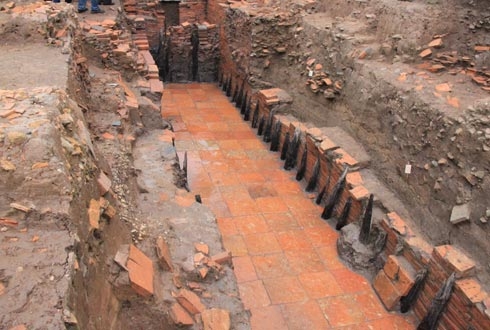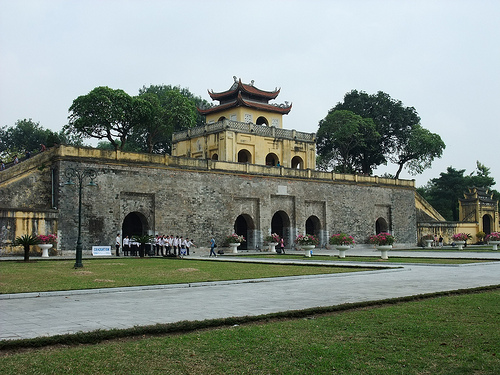Remnants of Ly Dynasty Found at Thang Long Citadel

Ly Dynasty Water System
Though studies are continuously performed on the ancient water system that was unearthed during the recent archaeological excavation at the Imperial Citadel of Thang Long in Hanoi, clues are pointing back to the Ly dynasty between 1009 to 1225. The water system was discovered at the Kinh Thien Palace – Doan Mon (Southern Gate).
The waterway, first of its kind to be excavated in Vietnam, is 2m wide and 2m in depth, was built with square and rectangular bricks and timber poles in an east-west direction. The foundation base is 1.6m wide. Archeologists believe such was used as a water pipeline, a water tank, a tunnel or a spiritual place. Another possibility, they assume, is that it may just have served as a foundation for the Ly palace’s central area.
More Ancient Discoveries
At the North Gate site, relics from the Tran, Early Le, and Nguyen dynasties were also uncovered. A cultural layer of the Tran dynasty was found right above the one of the Ly dynasty that included waterways, water tanks, tunnels, foundation buttresses, and brick foundations. The discovered waterway is similar to the ancient drainage or waterway from the Ly Dynasty era. The vestiges were built one over the other and may have existed for a thousand years from the Ly to the later Nguyen Dynasty.
The scientists also unearthed a number of vestiges imbued with architectural characteristics of the Tran, Le and Nguyen dynasties, including decorative objects, a sewerage system and square paving bricks. A ngu dao (exclusive road for kings) of the Le Dynasty was exposed. From these discoveries, local researchers assumed that prior to the Le Dynasty’s Kinh Thien Temple, Thien An Palace of the Ly Dynasty and Can Nguyen of the Tran Dynasty were constructed where the excavation site is today.
Putting the Pieces Together
Archeologists are very well aware that citadels bury many mysteries underground. But this new discovery came as a wonderful surprise. Japanese experts doubted the presence of the Ly Dynasty in the area. Continuous studies and excavation will bring more evidence not only of Ly Dynasty’s existence, but also of the previous dynasties.
The condition of the water works is impressive as its bricks still look new and undamaged even after hundreds of years. Scientists are now concerned on how to keep it in its best condition after it begins to be exposed to sun and wind. A plan is urged to be prepared as soon as possible to protect the relic. Preservation is time-consuming work and it’ll take a long time to study and expand the excavation site to obtain an overview and clarify the functions of the water system.
A proposal on opening the site to the locals during the coming Lunar New Year (which falls in February) is being discussed. A shelter is planned to be built to protect the site because it is a good opportunity for the community to approach the heritage themselves right after it is unearthed to see the real condition of the heritage. Thang Long Cultural Heritage Preservation Center plans to open the area to the public for free until April. Measures to preserve the work from further damage will be applied first.










